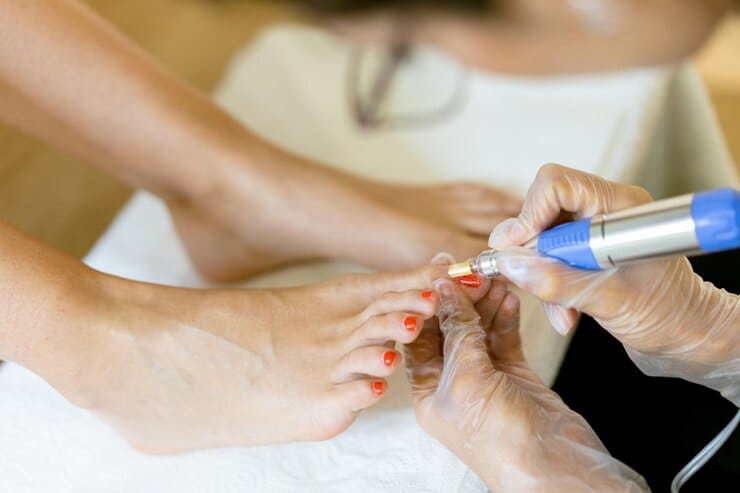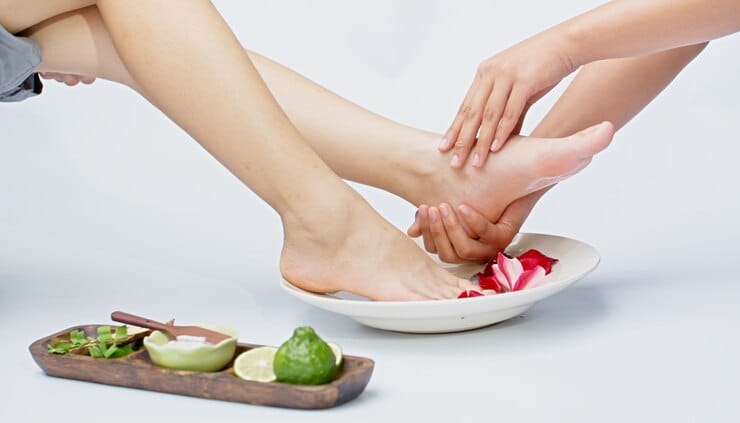Pedicures can be a relaxing and rejuvenating part of self-care, but for individuals with diabetes or poor circulation, extra caution is necessary. Understanding how these conditions affect your feet and adopting the right practices can help ensure a safe and beneficial pedicure experience.
Understanding Diabetes and Poor Circulation

Diabetes can lead to a range of foot issues due to neuropathy (nerve damage) and poor circulation. This makes it essential to be vigilant about foot care. Poor circulation, on the other hand, can lead to slow wound healing and an increased risk of infections. Understanding these conditions helps in tailoring pedicure practices to minimize risks.
General Pedicure Tips for Individuals with Diabetes
- Consult Your Doctor: Before starting any new foot care routine, consult with your healthcare provider to ensure it’s safe for you.
- Check Your Feet Regularly: Examine your feet daily for cuts, blisters, or any signs of infection. Diabetes can dull pain sensations, making it crucial to be proactive in monitoring foot health.
- Avoid Cutting Cuticles: Instead, push them back gently to avoid accidental injuries that could lead to infections.
Preparing for a Pedicure with Diabetes or Poor Circulation
- Clean and inspect Your Feet: Ensure your feet are clean and dry before beginning the pedicure. Inspect for any issues, such as cracks or sores, that might require medical attention.
- Choose the Right Tools: Use sterilized and gentle tools. Avoid sharp instruments that could cause cuts or injuries.
Pedicure Techniques to Avoid with Diabetes or Poor Circulation
- Avoid Foot Soaks: Long soaks in warm water can exacerbate circulation problems and potentially dry out the skin, leading to cracks and infections.
- Skip Harsh Scrubbing: Avoid using pumice stones or metal scrapers, as they can cause micro-tears in the skin.
Recommended Pedicure Practices with Diabetes or Poor Circulation

- Use Mild Exfoliants: Opt for gentle exfoliating creams or scrubs that won’t irritate your skin.
- Moisturize Regularly: Apply a rich, moisturizing lotion to your feet, but avoid the area between the toes to prevent fungal infections.
- Trim nails Carefully: Cut nails straight across to avoid ingrown toenails. Be gentle and avoid cutting nails too short.
Managing Common Foot Problems
- Dry Skin: Use a thick, emollient-rich foot cream to combat dryness and prevent cracks.
- Calluses and Corns: Consult with a podiatrist for proper treatment, as improper handling can lead to complications.
At-Home Pedicure Tips with Diabetes or Poor Circulation
- Create a Safe Space: Ensure your pedicure area is clean and well-lit to avoid accidental injuries.
- Use Appropriate Products: Choose products designed for sensitive skin and avoid those with harsh chemicals.
Professional Pedicure Services
- Find a Specialist: Seek out a salon experienced in dealing with clients with diabetes or poor circulation. Inform them of your condition before the appointment.
- Check hygiene practices: Ensure that the salon follows strict hygiene practices to minimize the risk of infections.
Foot Care Beyond Pedicures

- Regular Foot Checkups: Schedule regular checkups with a podiatrist to monitor and manage foot health.
- Healthy Lifestyle Choices: Maintain a balanced diet, exercise regularly, and manage blood sugar levels to support overall foot health.
Conclusion
Pedicures can be part of a healthy foot care routine for individuals with diabetes or poor circulation, provided you take the right precautions. By understanding your condition, adopting gentle practices, and consulting professionals, you can enjoy the benefits of a pedicure while keeping your feet safe and healthy.
FAQs
How often should people with diabetes get a pedicure?
It’s generally safe to get a pedicure every 4-6 weeks. However, consult your healthcare provider for personalized recommendations.
What are the signs of foot problems that require medical attention?
Signs include persistent pain, unusual swelling, redness, or sores that don’t heal. If you notice any of these symptoms, seek medical advice.
Can I use regular nail polish if I have diabetes?
Yes, but choose nail polishes that are free from harsh chemicals. Always ensure your nails and surrounding skin are healthy before applying polish.
How do I choose the right moisturizer for my feet?
Look for a thick, emollient cream designed for diabetic skin. Avoid products with alcohol or strong fragrances.
Are there any specific foot care products recommended for poor circulation?
Consider using creams that improve circulation, and opt for soft, comfortable socks and well-fitting shoes to support circulation.







